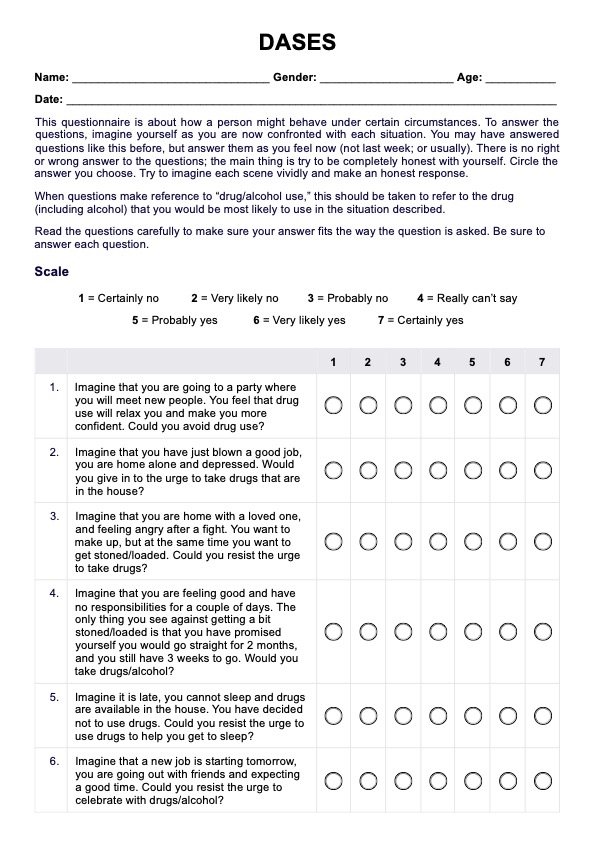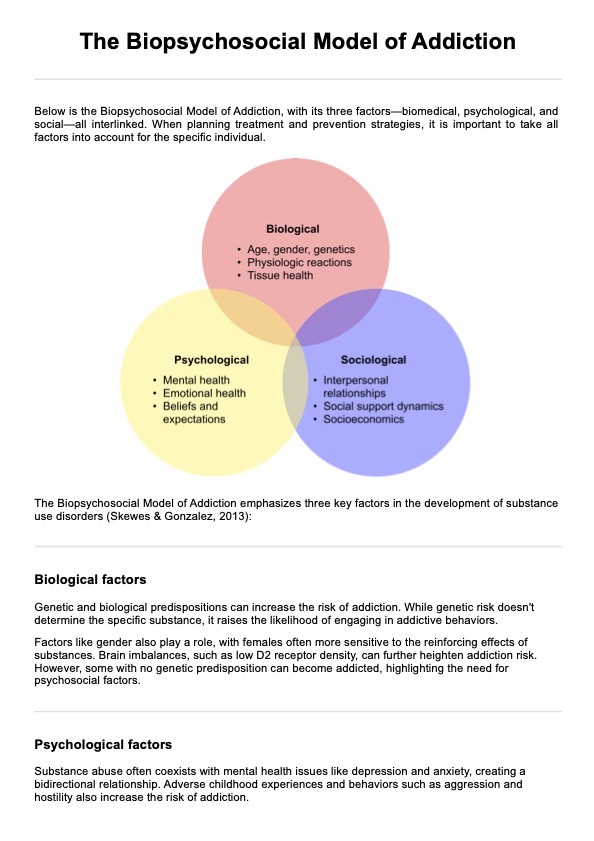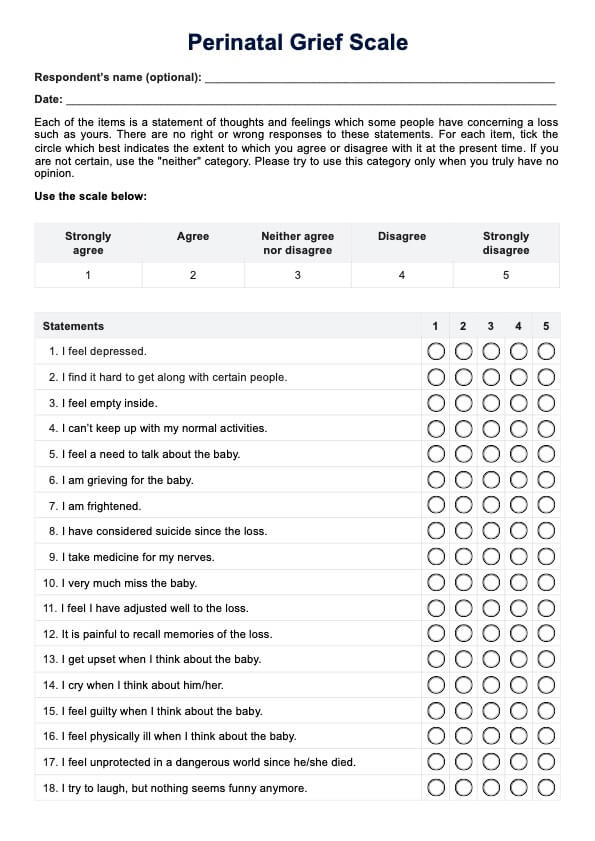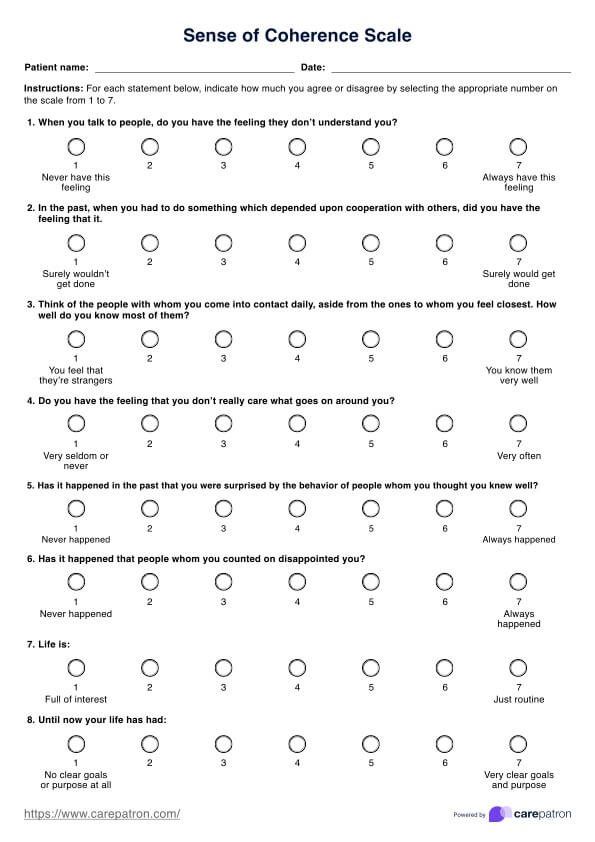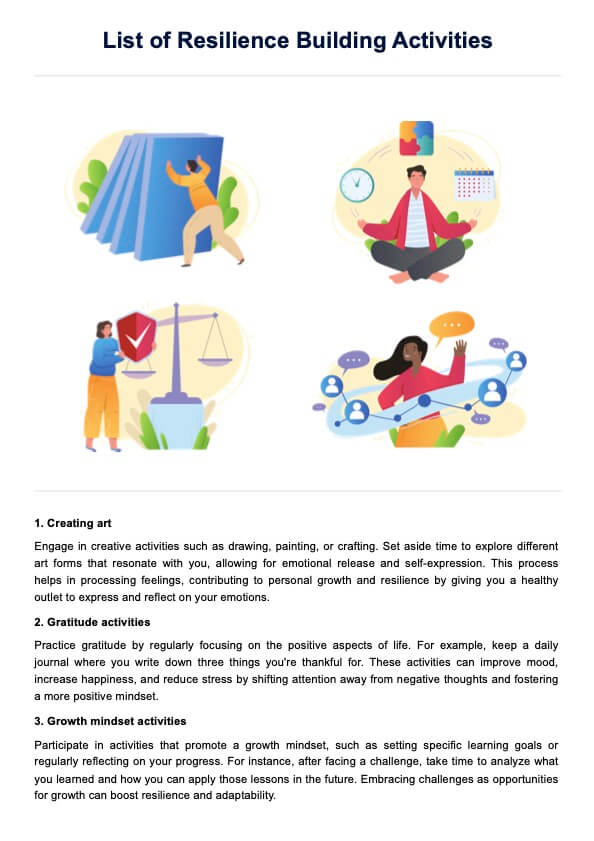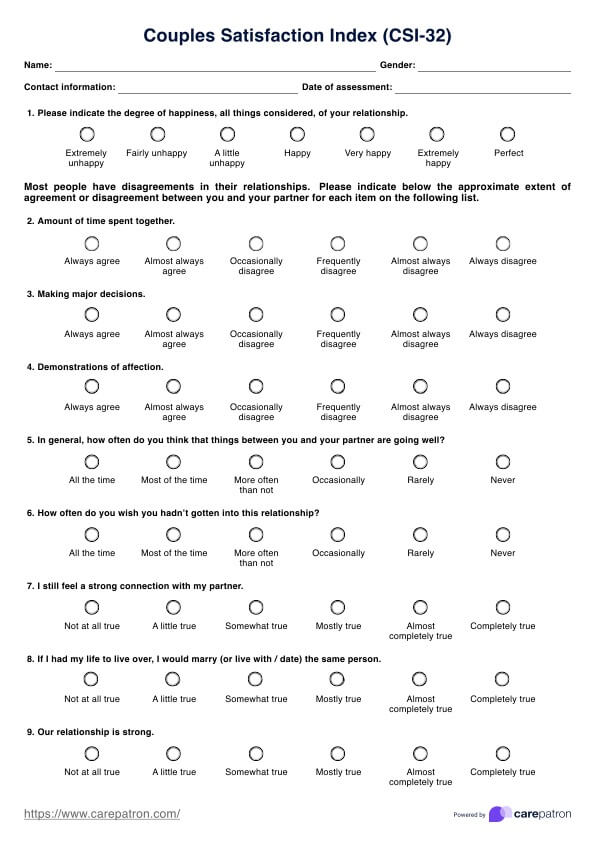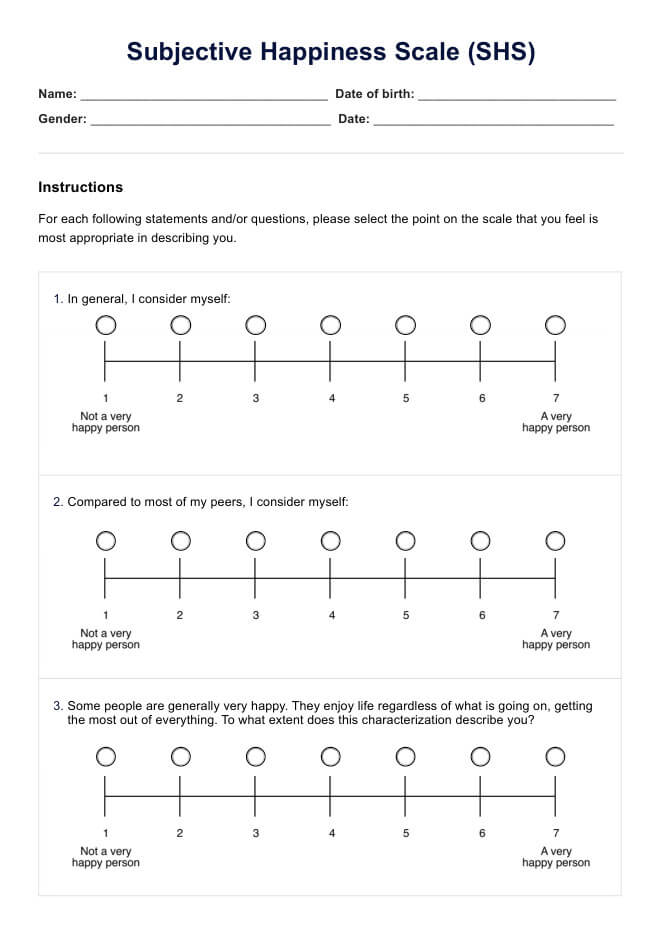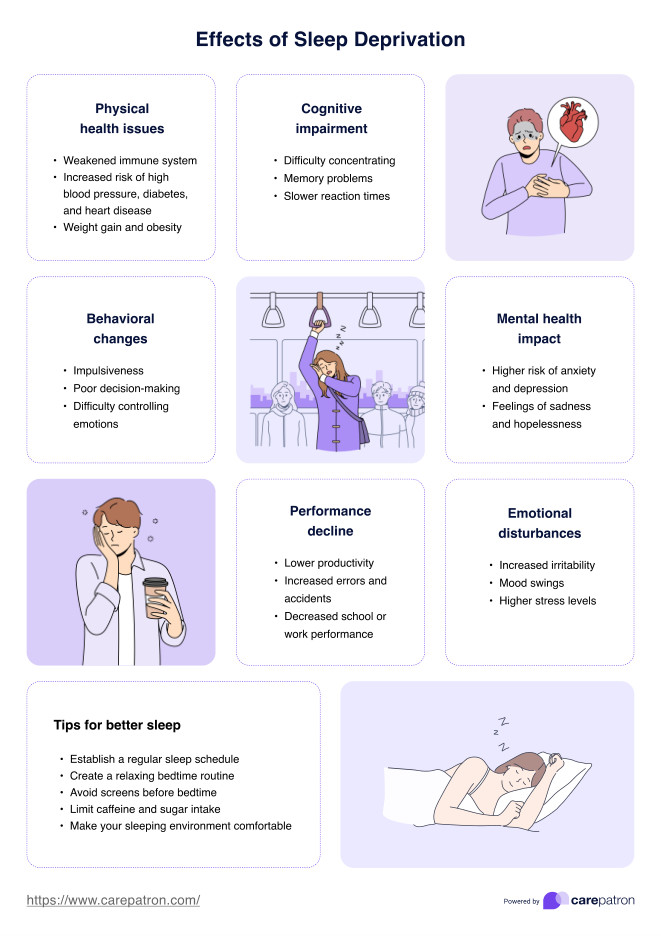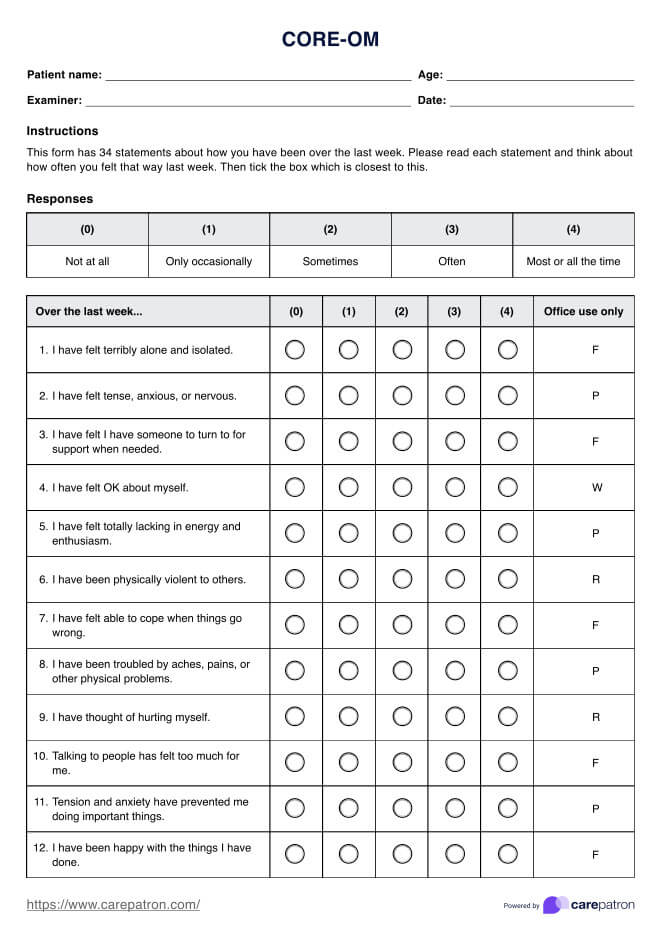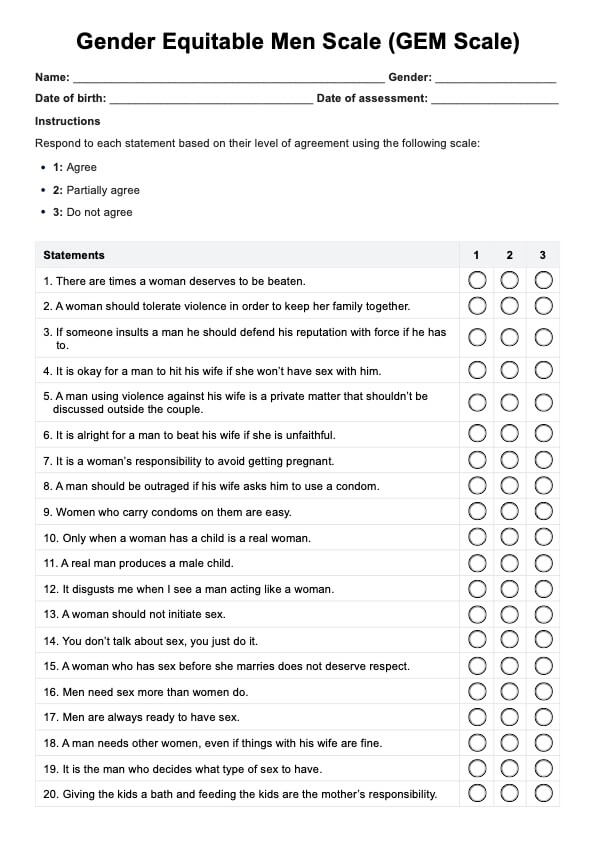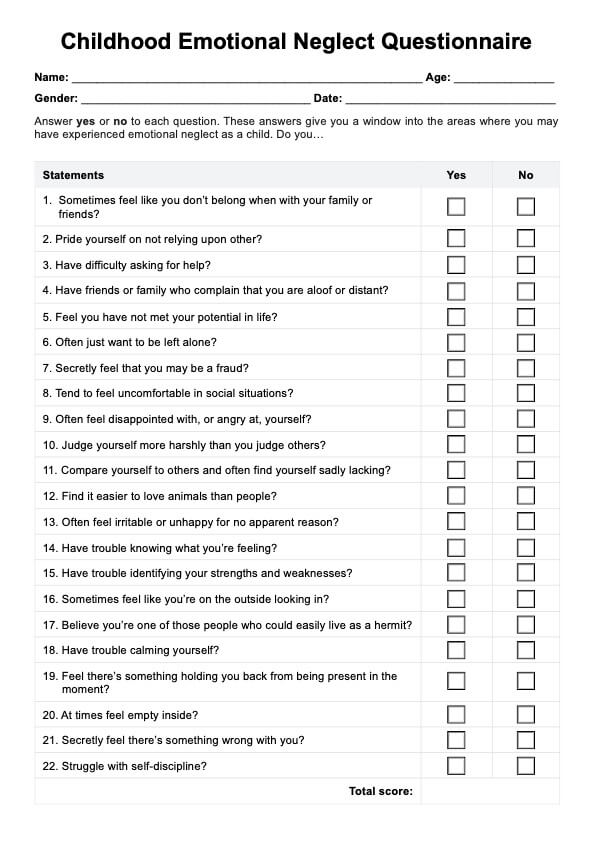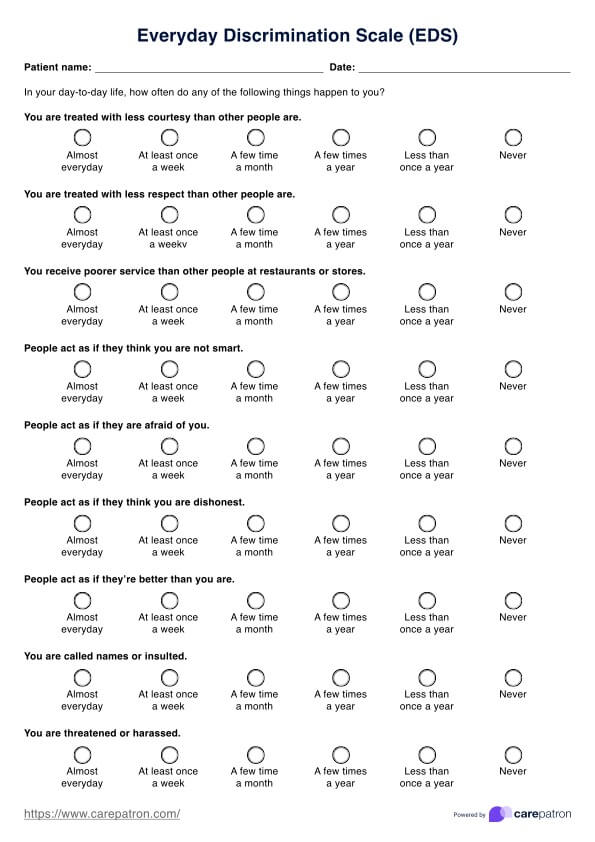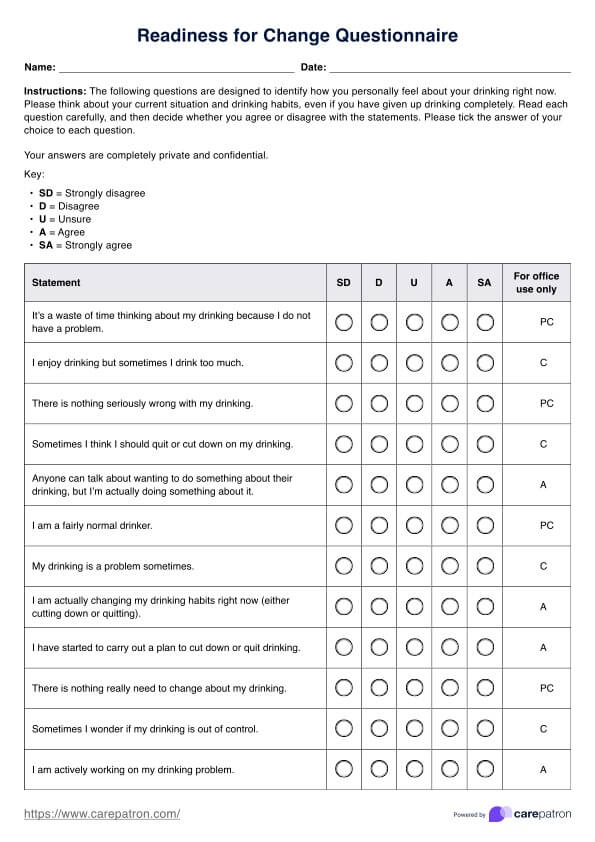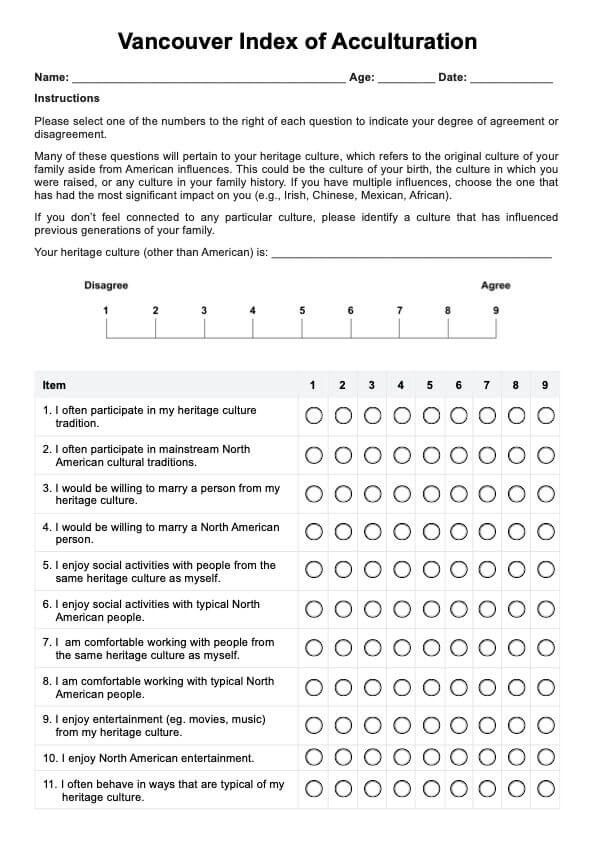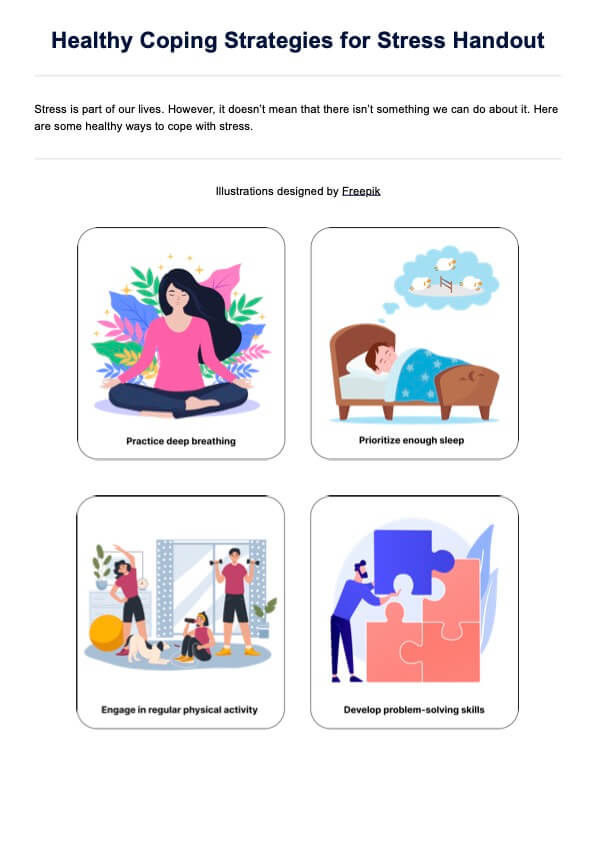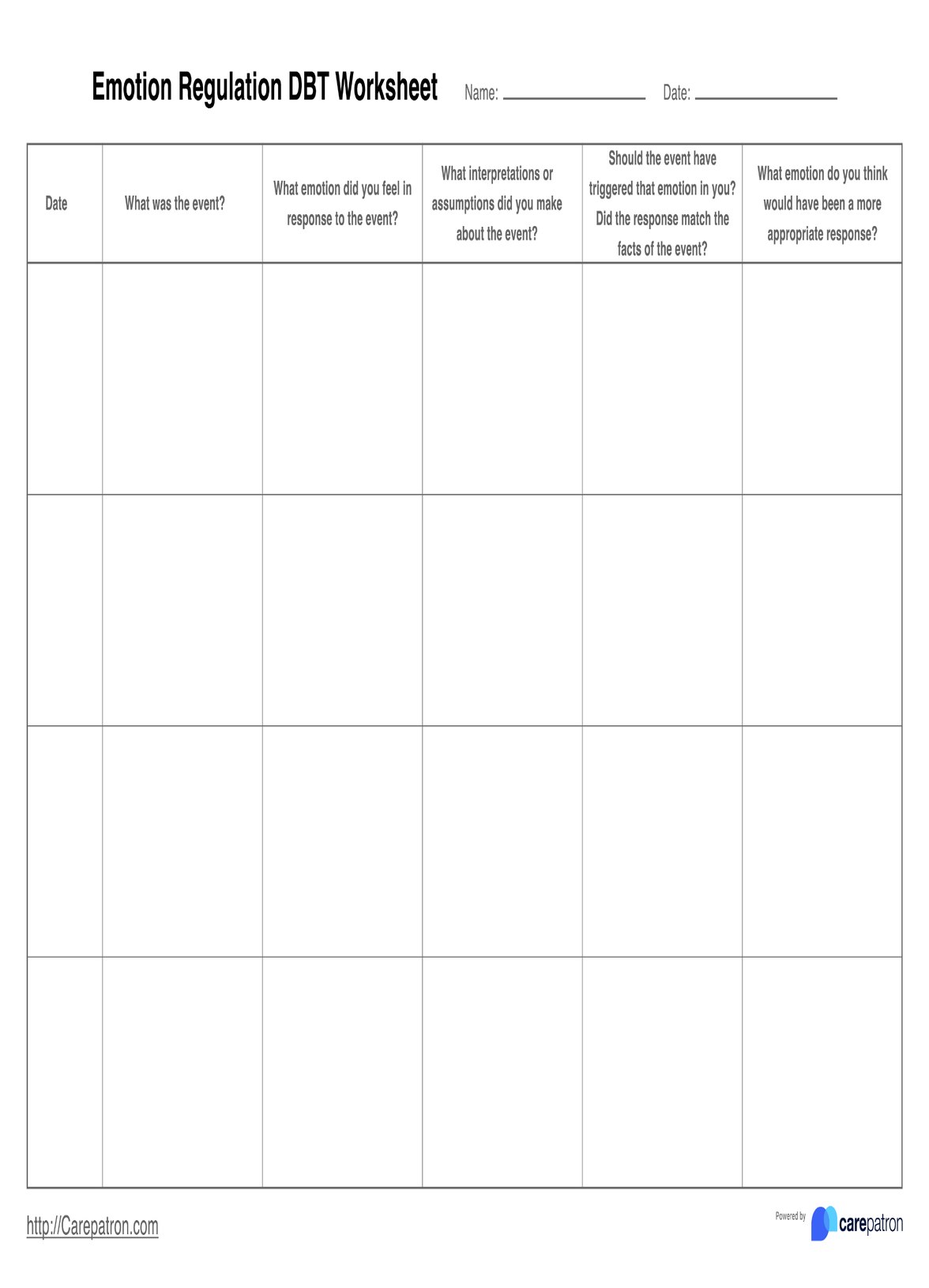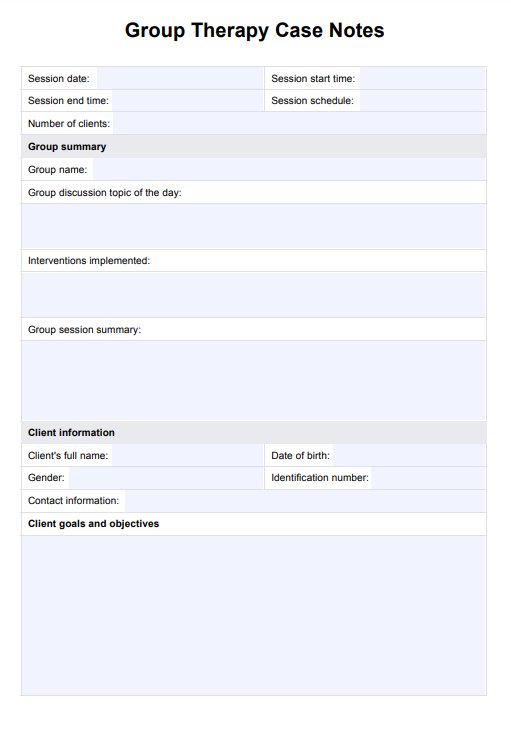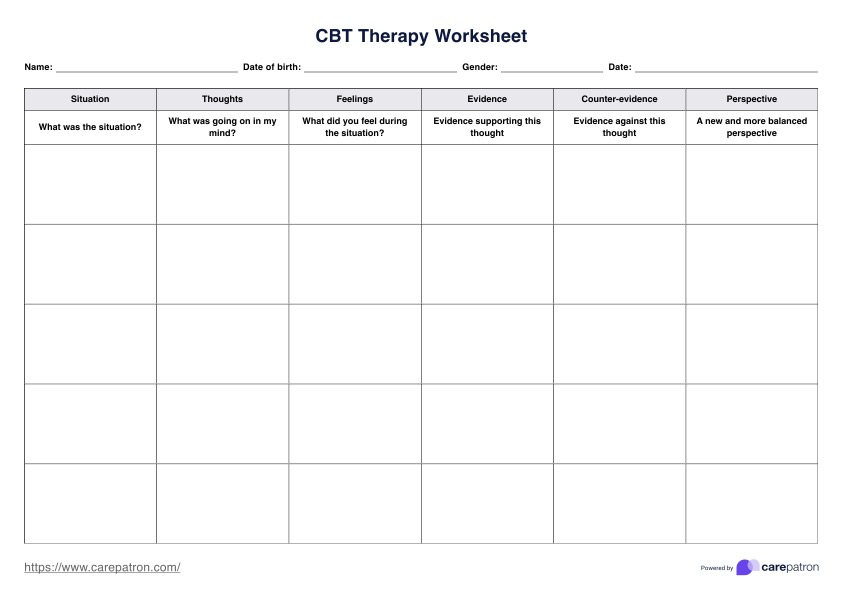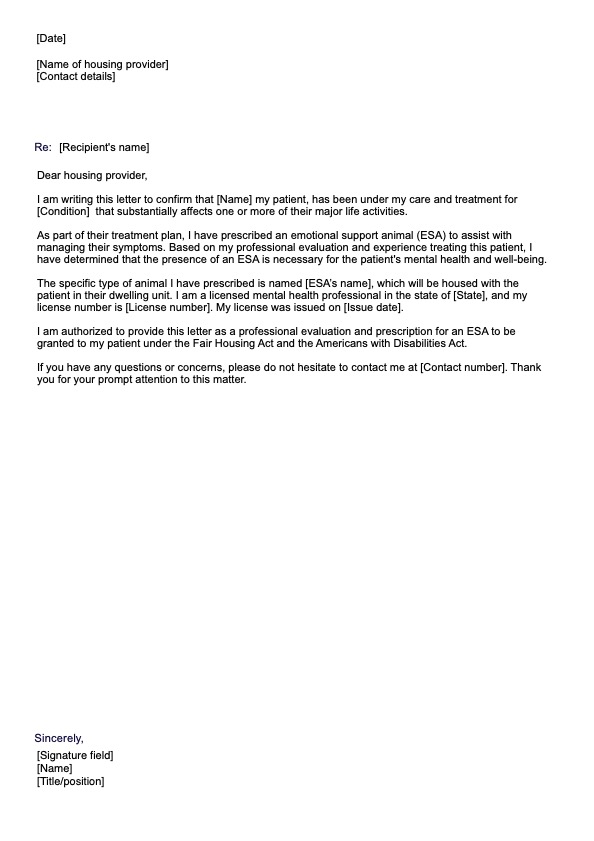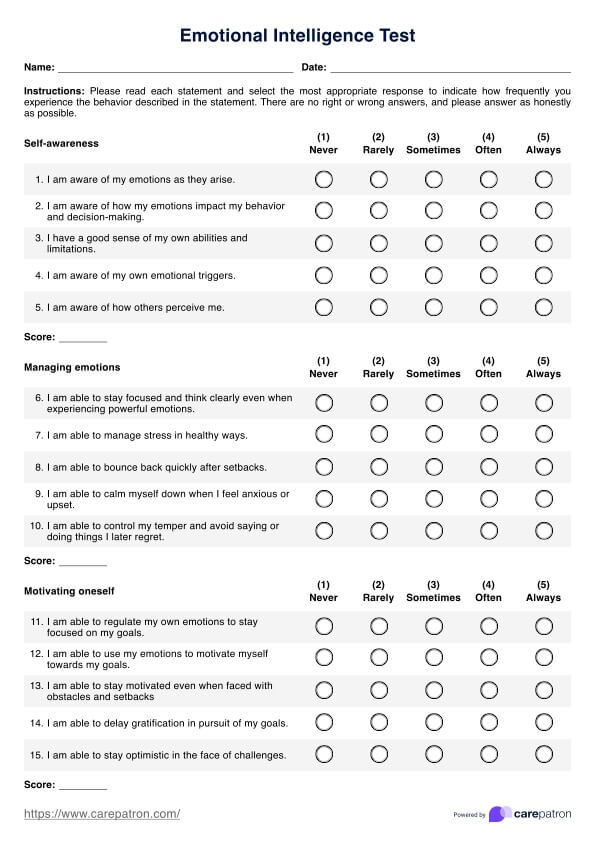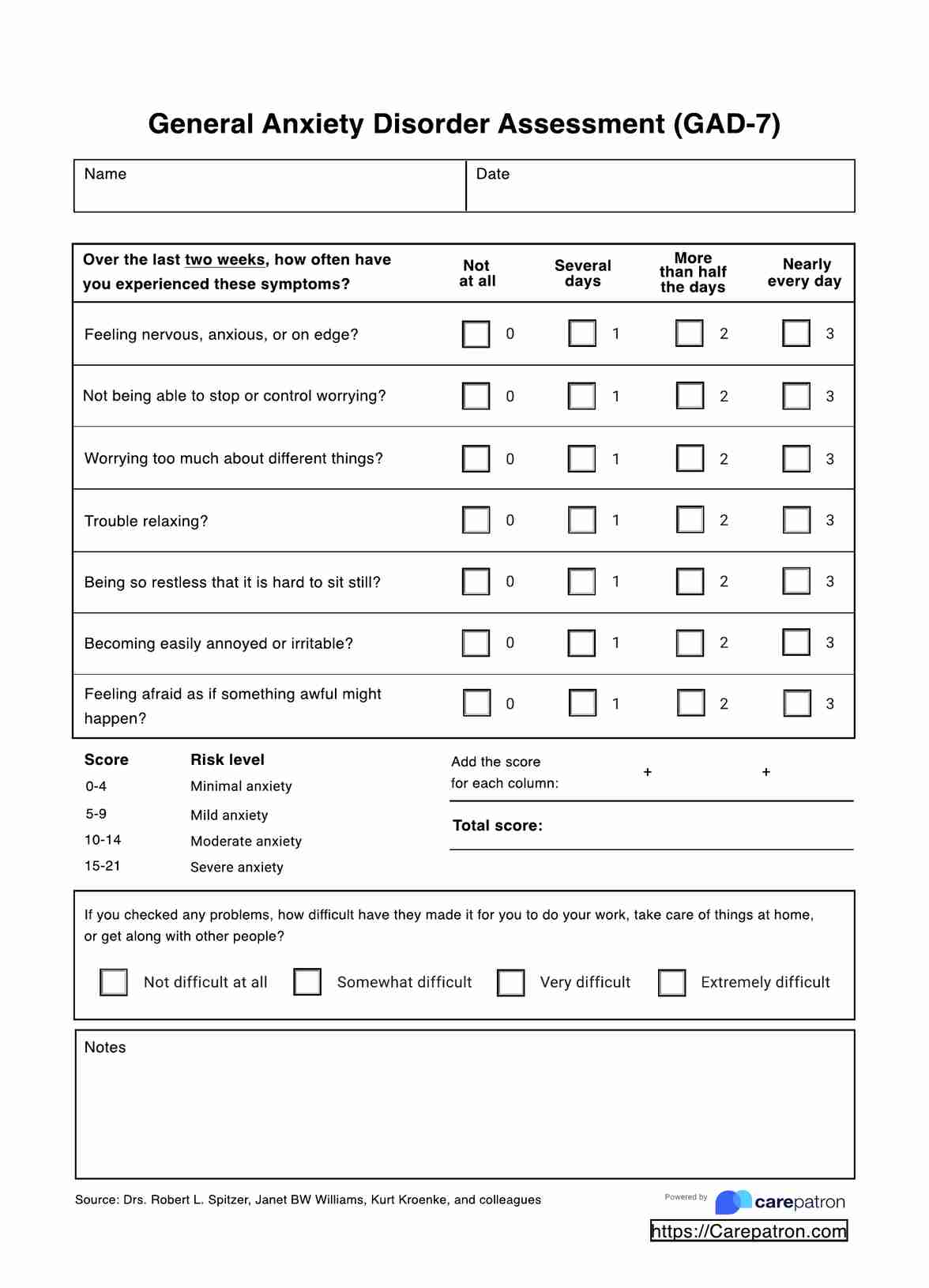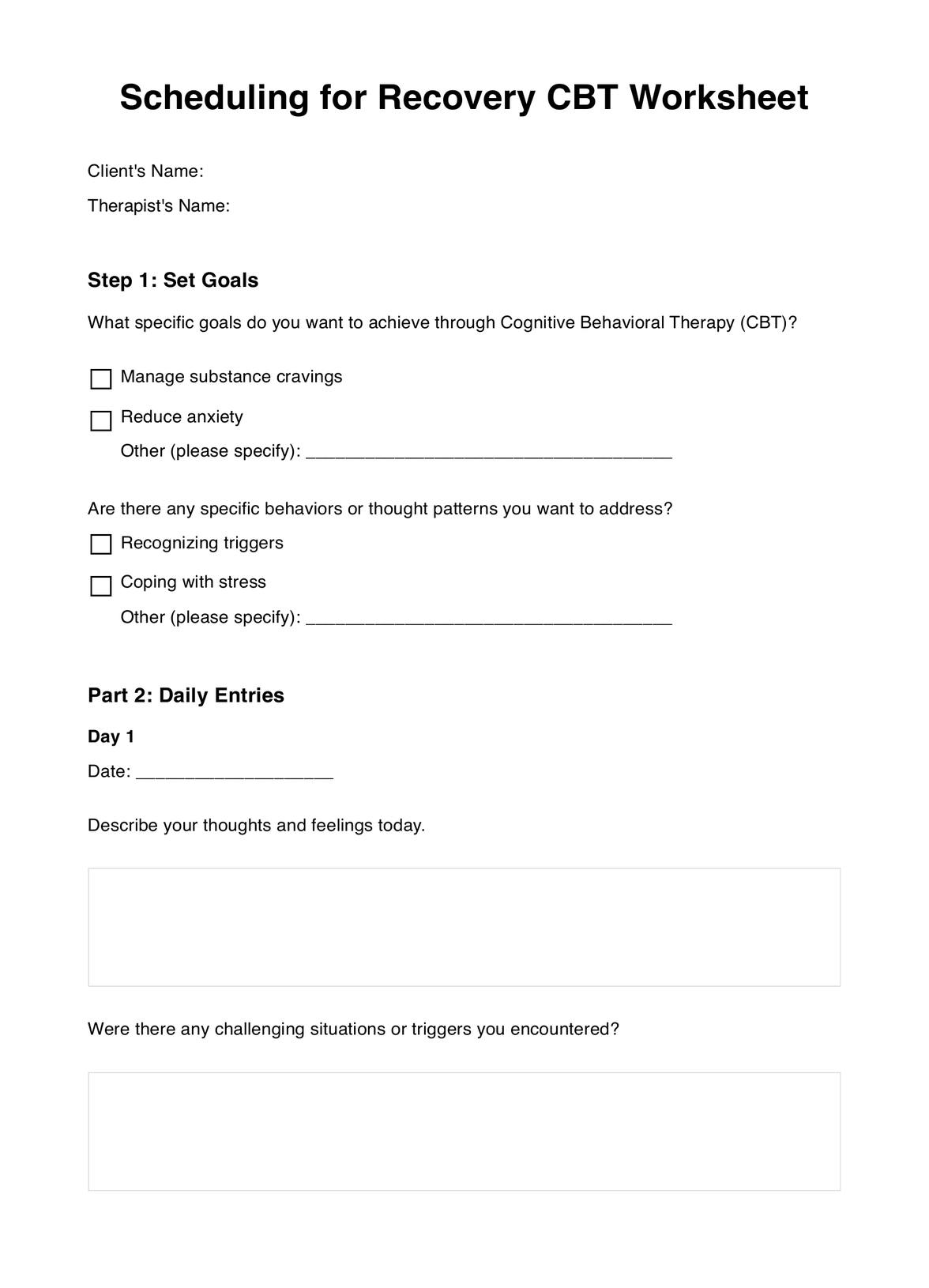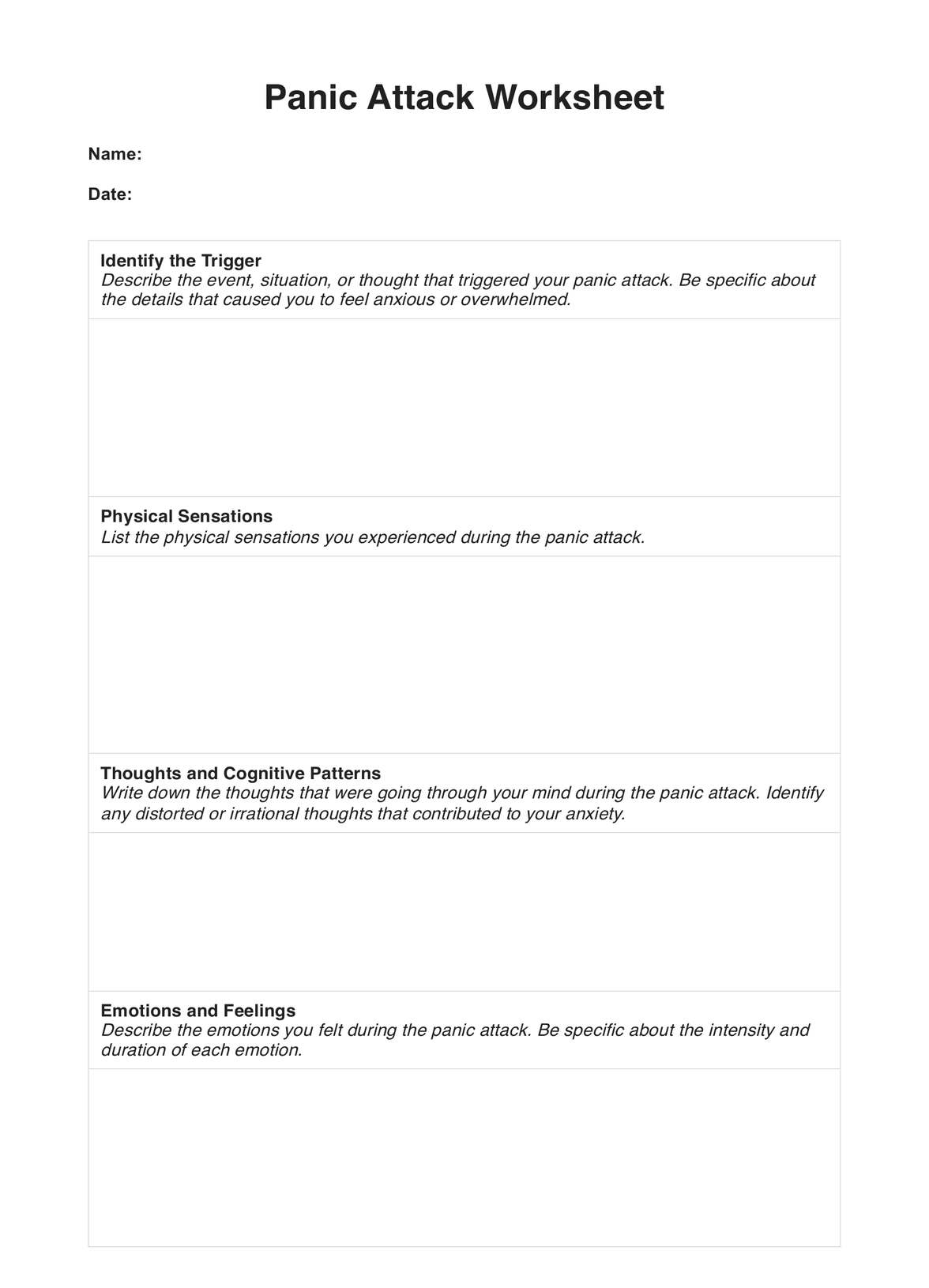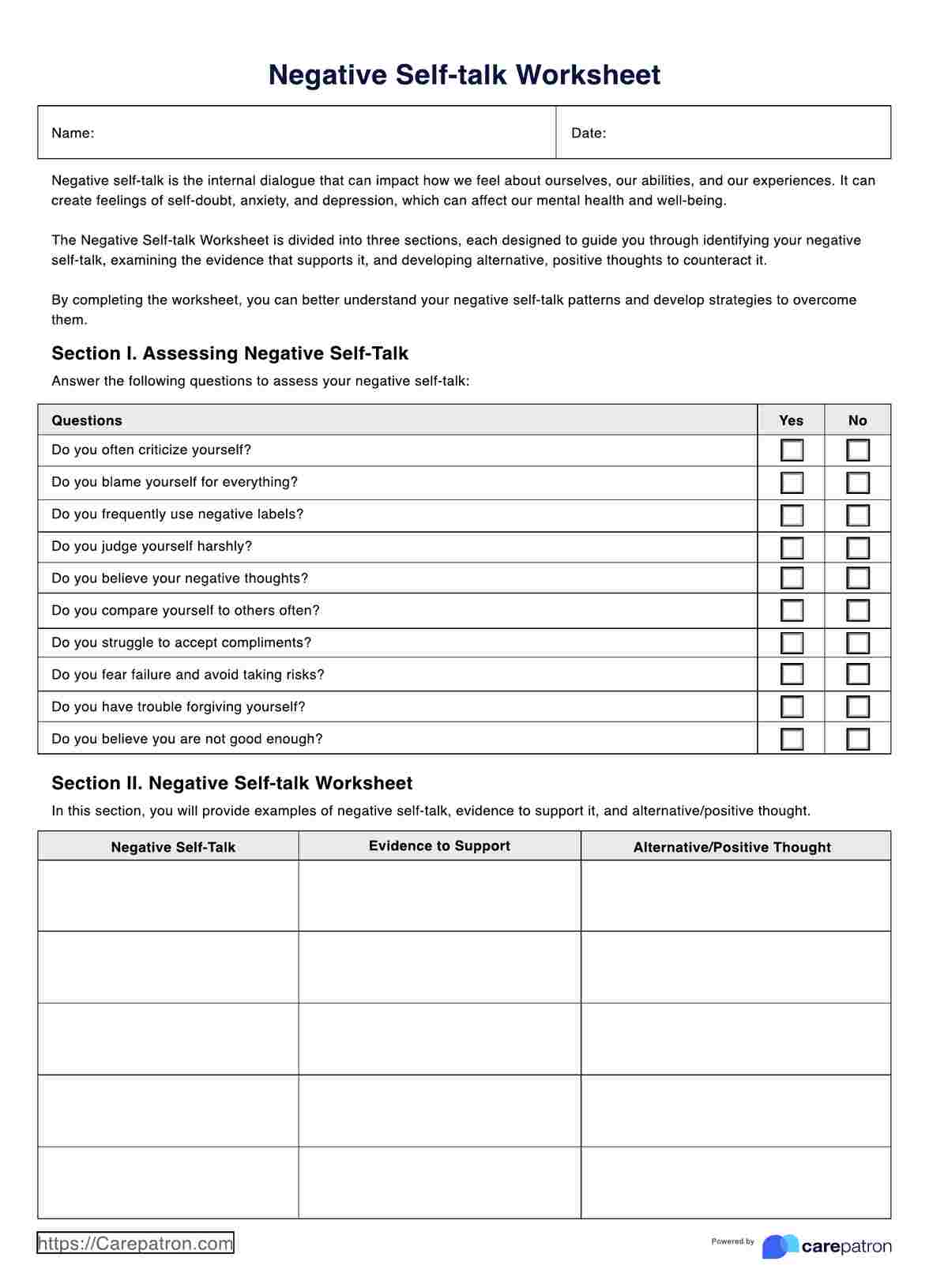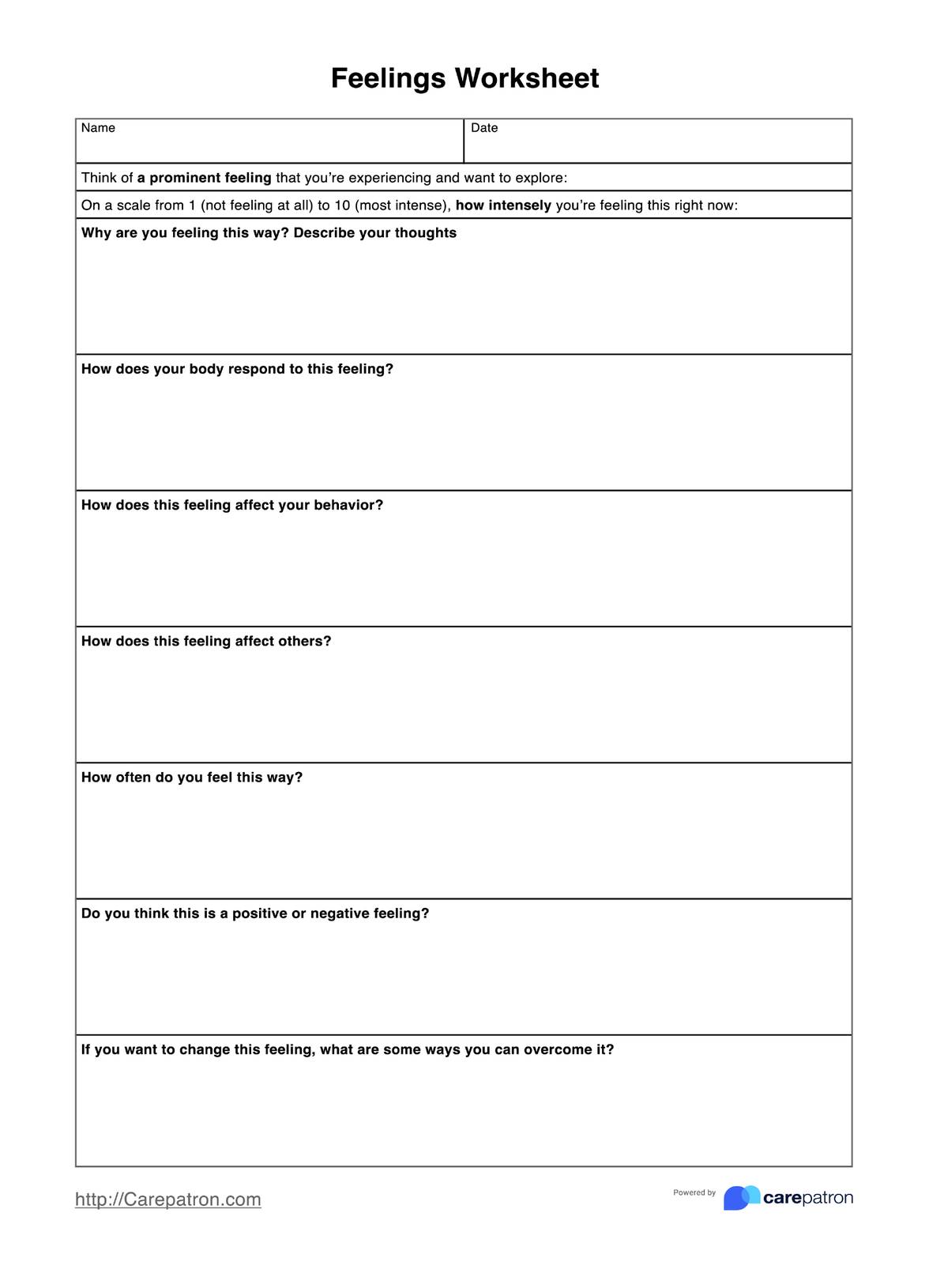Drug Abuse Screening Test (DAST-10)
Use the DAST Screening Tool to assess a patient’s potential involvement with drugs, specifically if they have been abusing the use of drugs for the past twelve months before screening them.


What is the Drug Abuse Screening Test (DAST-10)?
The Drug Abuse Screening Test (DAST-10), also known as the DAST Screening Tool, is a nifty instrument used to assess a patient for suspected drug abuse and drug dependence for the past twelve months prior to the test being administered.
The DAST Test comes in the form of a ten-item questionnaire with items that zoom in on different aspects of drug use, such as how often a person takes drugs, the consequences of abusing drugs, and the effects of drug abuse in terms of how it affects a person’s health.
The DAST Questionnaire has a YES or NO format, making it a questionnaire that anyone can easily use and answer. Each question can score either a 0 or 1, with the total score being 10 for the whole test. The higher the score, the higher the indication of severe drug abuse.
They need to answer the following questions:
- Have you used drugs other than those required for medical reasons?
- Do you abuse more than one drug at a time?
- Are you always able to stop using drugs when you want to? (If never use drugs, answer “Yes.”
- Have you had "blackouts" or "flashbacks" as a result of drug use?
- Do you ever feel bad or guilty about your drug use? If never use drugs, choose “No.”
- Does your spouse (or parents) ever complain about your involvement with drugs?
- Have you neglected your family because of your use of drugs?
- Have you engaged in illegal activities in order to obtain drugs?
- Have you ever experienced withdrawal symptoms (felt sick) when you stopped taking drugs?
- Have you had medical problems as a result of your drug use (e.g., memory loss, hepatitis, convulsions, bleeding, etc.)?
Drug Abuse Screening Test (DAST-10) Template
Drug Abuse Screening Test (DAST-10) Example
How to use the Drug Abuse Screening Test (DAST-10)
Administer the test to the patient.
The test can be administered in two ways:
- The health practitioner will use this test in an interview format where they ask the patient the ten questions, or
- The health practitioner can hand them a copy of the test and trust that the patient will answer honestly (this also goes for the first option; you are going to rely on their YES or NO answers, after all)
Given that this is a sensitive topic, it is best to make sure you make them feel like they are in a safe space where they can be honest about their drug abuse experience without judgment. You need to make them feel that you honestly want to help them.
You should also tell them that if they are unsure about their answers, they can choose the answers they think are mostly right. You may also give them the option not to answer certain questions or the whole test (but hopefully they do answer).
Also, remember to emphasize that this DAST Questionnaire revolves around the use of drugs. The use of tobacco and the consumption of alcohol are not counted.
Tally the scores and determine the next course of action.
Once they are done answering, it is time for you to tally the scores, whether they answered all of them or just some of the questions. After you have calculated the sum, you may refer to this table to know the score designations and the recommended actions to take for each score range:

When does one typically administer the Drug Abuse Screening Test (DAST-10)?
The DAST Test is usually administered when a healthcare practitioner needs to screen a patient to check if they are potentially abusing drugs – whether they are prescribed medication or not.
But the use of this test is not a one-time thing since the test is also administered to patients confirmed to have been abusing drugs. This is still used for such patients because it may serve as a monitoring tool to track treatment progress and determine if certain patients require more support or even interventions to help whittle down their drug abuse.
Who typically uses the Drug Abuse Screening Test (DAST-10) and for whom is it?
The Drug Abuse Screen Test (DAST-10) was created to identify patients abusing drugs and to determine the course of action that healthcare practitioners should take for each patient depending on their score.
The following healthcare practitioners are the ones who normally administer the test to the patients:
- Rehabilitation specialists
- Psychologists
- Psychiatrists
- Therapists
- Counselors
- Nurses
So long as the practitioner specializes in treating patients who are abusing drugs, they can definitely use this to screen patients and to help those who are confirmed to be abusing and dependent on drugs.
.png)
What are the benefits of using the Drug Abuse Screening Test (DAST-10)?
The DAST Test is easy to administer and accomplish!
Given that the DAST Questionnaire only has ten questions and can only be answered with a YES or NO, this assessment is easy to use and quick to accomplish!
If you, the healthcare practitioner, administers this like an interview, it shouldn’t take you longer than ten minutes unless the patient does not want to cooperate. Hopefully, that does not become the case. That’s why creating a safe space for them to talk and answer questions related to their (suspected) drug abuse is important.
The test results will help practitioners determine the next course of action.
The test has score ranges, assigned designations, and recommended courses of action to take depending on the patient’s final score.
Through the recommendations, practitioners won’t be left wondering what to do next because the table tells you if no action is needed, if a patient requires further investigation, if they need to be reassessed at a later time, or if they actually need intensive assessment.
Re-administering the test is a good way to monitor patients.
The test is not just a way to identify if a patient is abusing drugs and how severe their drug abuse is. It also serves as a wonderful monitoring tool to see if the patient is improving or not, as well as if the care plan (which includes support from people and interventions) is working, if it should be maintained, and/or if some part of the plan needs to be tweaked.
While the version that we have on Carepatron is identical to the original DAST-10, we included an Additional Comments section for the purposes of indicating the practitioner's opinions on certain matters, like indicators of improvement or deterioration in the patient, what aspects of the care plan are working and not working, etc. You can enhance your practice and client outcomes with the support of this care plan template.
Commonly asked questions
No. The DAST-10 Test is a screening tool, not a diagnostic tool. It is used to help you determine what courses of action you should take when it comes to the patient you are evaluating. Did their score fall under the substantial or severe level? Then they require more comprehensive examinations for a diagnosis, and a corresponding treatment plan can be made.
Yes. Like with any clinical document, their answers and the information provided by you via the Additional Comments section should be kept confidential to you, the patient, the patient’s relatives or trusted companions (if applicable), and members of your staff assisting you with your patient.
This test and its questions were created so that the types of drugs the patient is (potentially) abusing doesn’t matter, which means they are general enough to cover a broad range of drugs and problems that arise from the abuse of drugs. Just remember that this doesn’t cover the use of tobacco and alcohol.


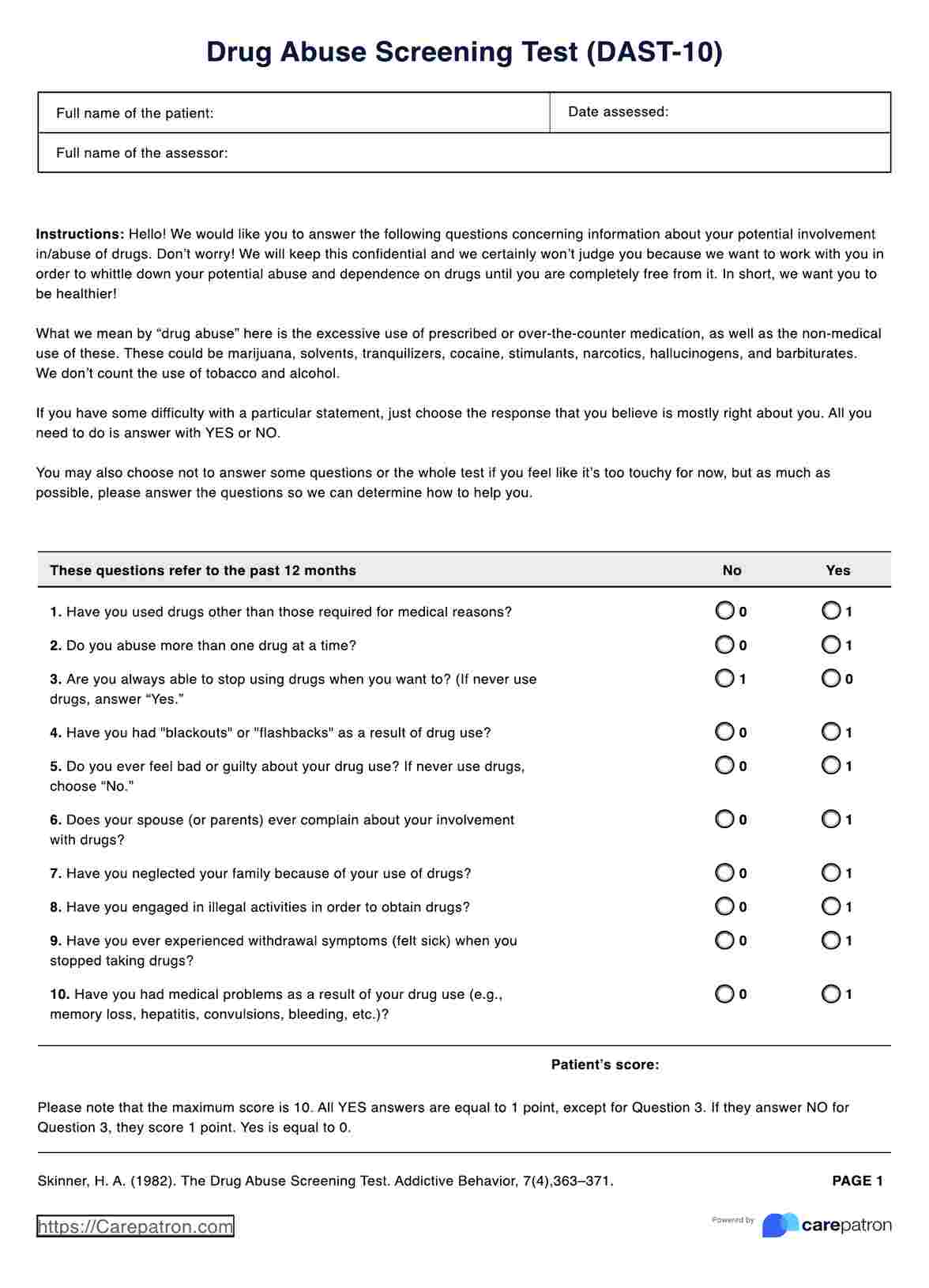
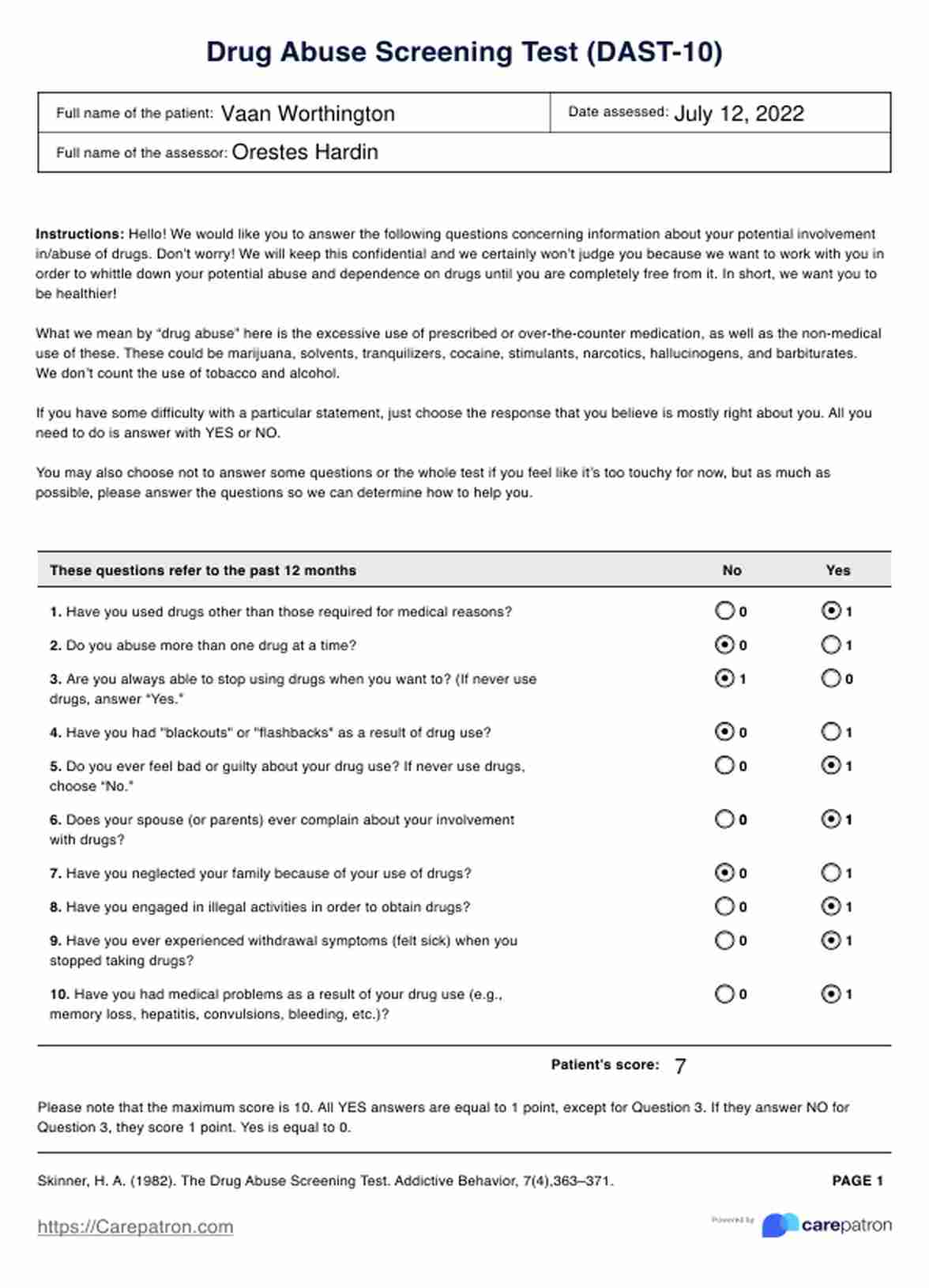

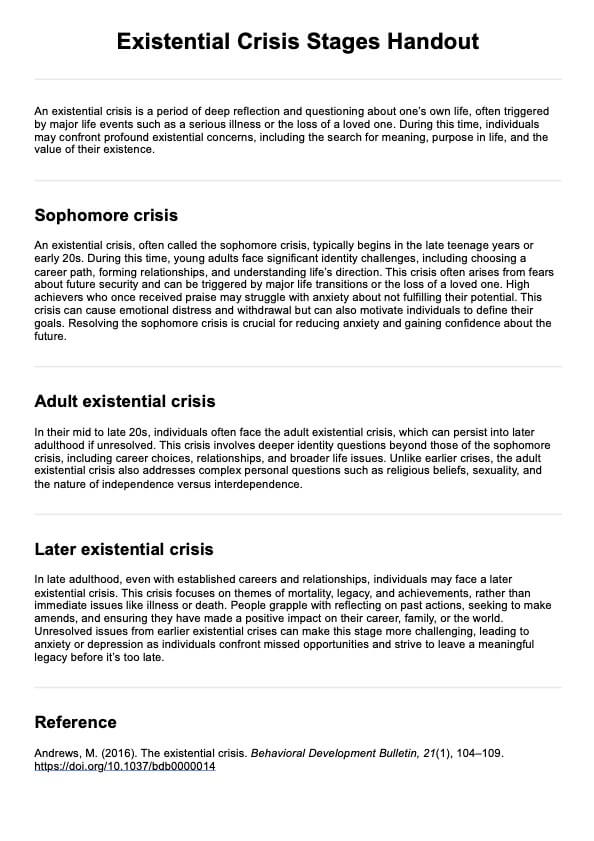
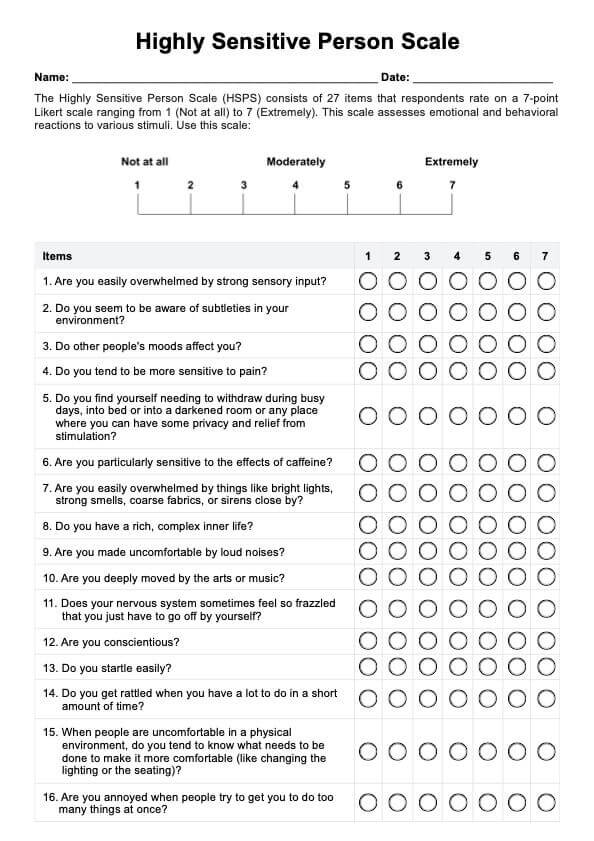










-template.jpg)


